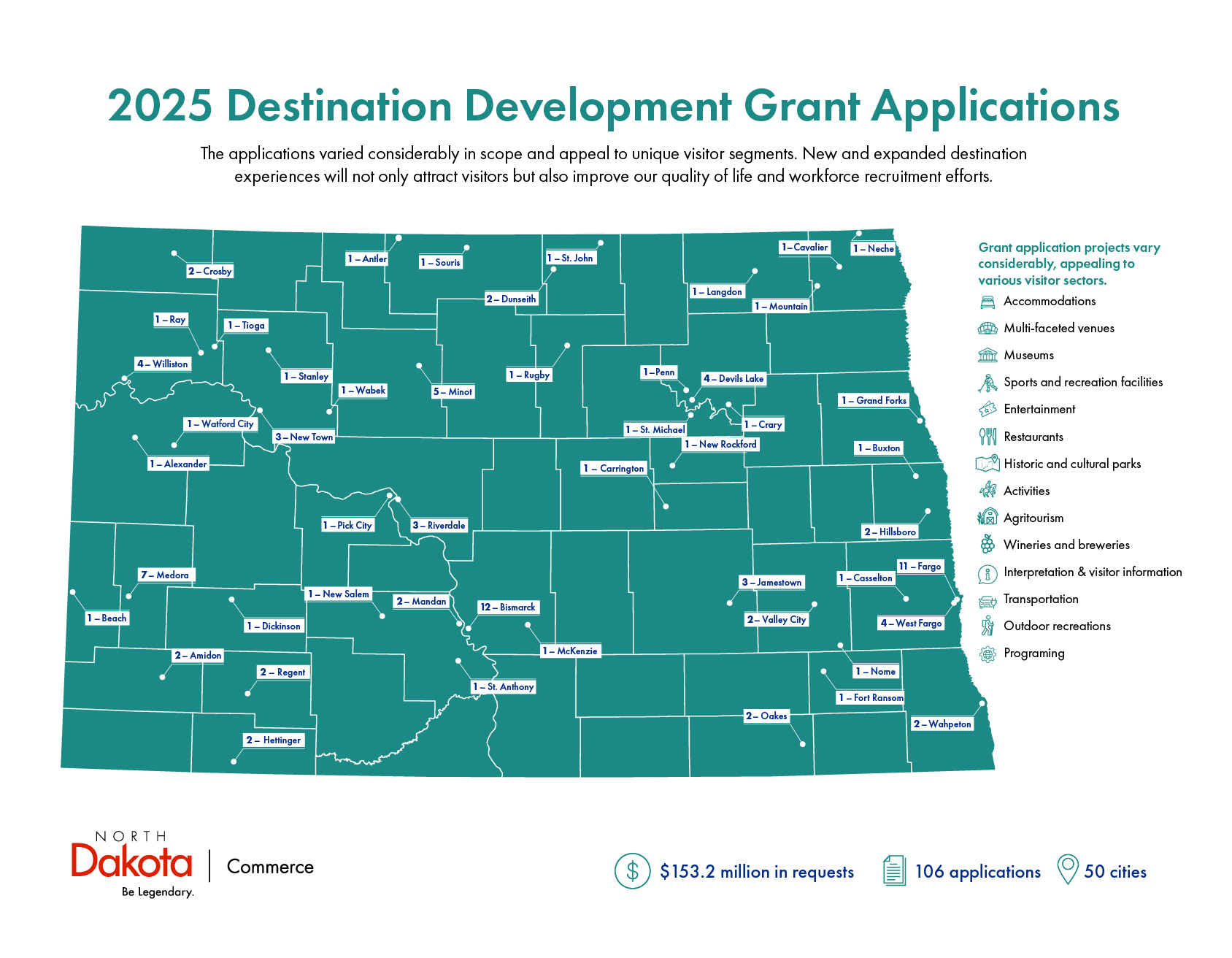The North Dakota Department of Commerce has awarded $15 million in Destination Development Grants to 23 projects across the state. These investments will enhance tourism infrastructure, elevate visitor experiences and support long-term economic growth in communities large and small.
The 2025 grant cycle was like a statewide road trip with 106 applications from 50 communities, each one a unique stop showcasing local gems and bold ideas. Together, they mapped out $153.2 million in proposals aimed at making North Dakota an even more unforgettable destination. The projects varied widely in scope and appeal, targeting distinct visitor segments and offering new or expanded experiences designed to attract new travelers, while enhancing residents’ quality of life.
2025 Destination Development Grant recipients
Badlands Gateway Trails – Medora | Barn to Yarn Experience – Nome Schoolhouse | Bear Creek Events & Cultural Center – Fargo area |
Boathouse Bunkhouse – Devils Lake | Carrington Rainbow Gardens & Interpretive Center – Carrington | Hearthside Vineyard and Winery – Oakes |
Heartland Trading Post – Rugby area | Icewind Brewing – Casselton | Jurassic Junction – Hettinger |
Medora Conference & Heritage Commons – Medora | Miniature Golf at Frontier Village – Jamestown | ND Country Fest Accommodations & Permanent Stage – New Salem |
Raising the Bar for the Arts – Jamestown | Red Panda Legacy Project – Fargo | Red River Valley Grandstand – West Fargo |
Scandinavian Heritage Park – Minot | 6 Mile Lodge Expansion – Devils Lake | Stockman’s Square – Watford City |
Tourism Makerspace Hub – Mandan | Trestle Commons – Bismarck | Up North Cabins – Langdon |
Urbain Cote Round Barn RV “FARM” – Dunseith | Valley City Heritage Voices – Valley City |
|
*Awardees, please use the link below to access your grant portal to complete your reporting and reimbursement.
2025 Destination Development Grants
The application window for this grant closed on September 2nd, 2025 and projects were awarded on October 13th, 2025.
Click here to view the awardees






